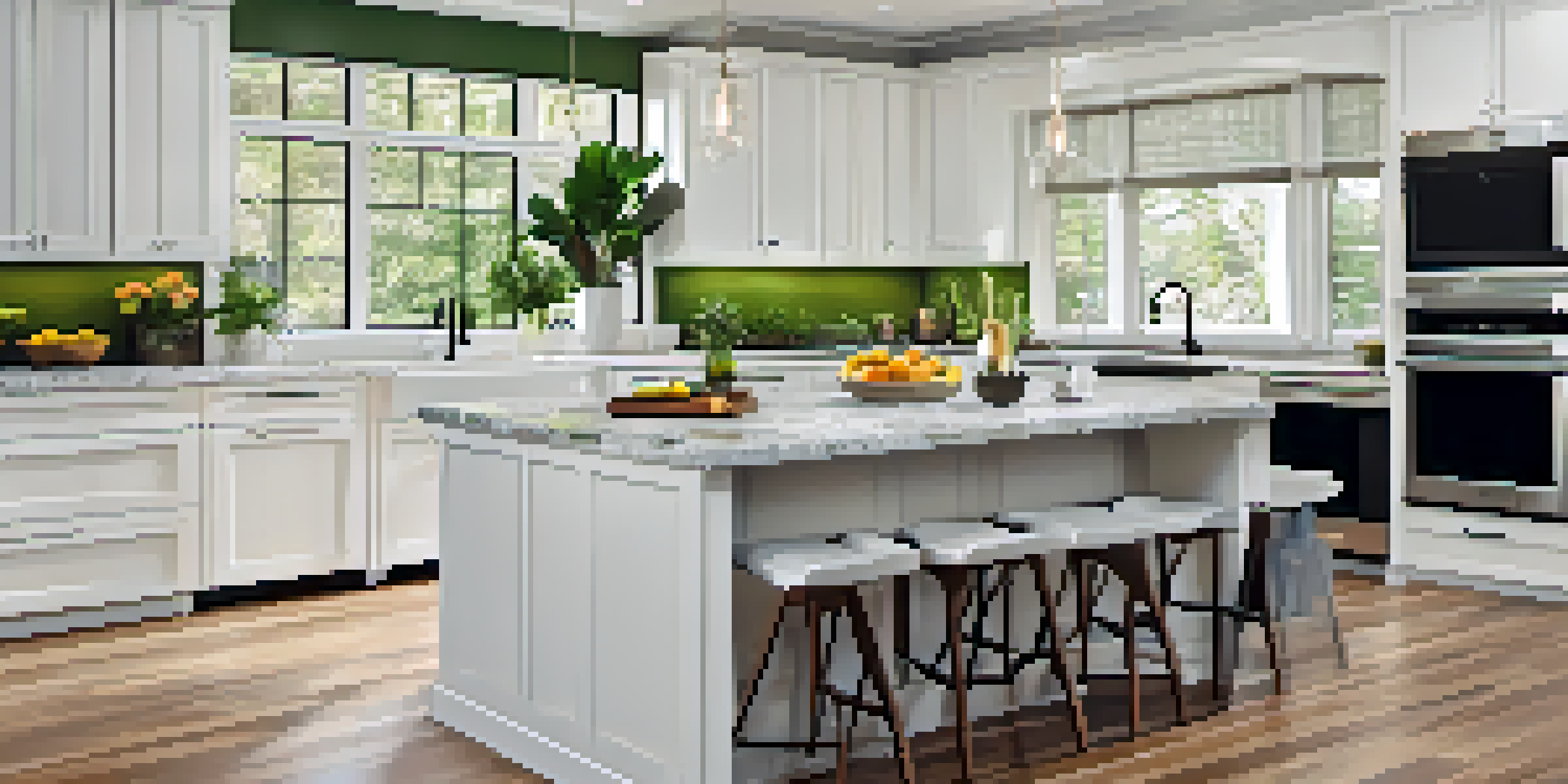Understanding the Costs Involved in Home Renovation Projects

Identifying the Types of Renovation Costs You’ll Encounter
When planning a home renovation, it's essential to identify the various types of costs involved. Renovation costs can be classified into direct costs, like materials and labor, and indirect costs, such as permits and inspections. Understanding these categories helps you create a more accurate budget and avoid surprises down the line.
Good design is good business.
Direct costs are straightforward; they include expenses for items like flooring, countertops, and the labor needed to install them. On the other hand, indirect costs often get overlooked but can add up quickly. These might include fees for permits, design consultations, and even temporary housing if your home is unlivable during renovations.
By breaking down renovation costs into these categories, you can prioritize spending and allocate your budget more effectively. This clarity allows you to make informed decisions and helps ensure your project stays on track financially.
Labor Costs: Understanding What Goes into Your Bill
Labor costs can significantly impact your overall renovation budget, often accounting for 20-35% of the total expenses. These costs vary based on the type of work being done, the expertise of the professionals involved, and your geographical location. For example, hiring a specialized contractor for intricate work can be more expensive than a general contractor.

It's important to get multiple quotes and understand what each contractor includes in their pricing. Some may charge hourly rates, while others might provide flat fees for specific tasks. Always clarify whether the quote covers labor only or includes materials and other expenses.
Understand Renovation Cost Types
Identifying direct and indirect costs helps you create a more accurate renovation budget.
Additionally, consider the potential for unexpected labor costs that can arise during renovations, such as discovering structural issues that need immediate attention. Having a contingency fund in your budget can help you manage these surprises without derailing your project.
Material Costs: Choosing Quality Without Breaking the Bank
Material costs can vary widely depending on the quality and type of materials you choose for your renovation project. While it might be tempting to opt for the cheapest options, investing in quality materials can save you money in the long run by reducing maintenance and replacement costs. Think of it like buying a good pair of shoes; spending a little more upfront can lead to a longer-lasting product.
The bitterness of poor quality remains long after the sweetness of low price is forgotten.
It’s also essential to factor in the cost of materials beyond just what you see on the surface. For example, if you're installing new flooring, you’ll need to account for underlayment, adhesive, and possibly a few tools. It’s these hidden costs that can add up quickly and catch you off guard.
To keep material costs in check, consider shopping during sales or using reclaimed materials where appropriate. This approach not only saves money but can also add unique character to your home.
Permits and Inspections: Don’t Forget the Red Tape
Most home renovation projects require permits, which are essential for ensuring that your work complies with local building codes and regulations. Permit costs can vary significantly depending on your location and the scope of your project, ranging from a few hundred to several thousand dollars. Ignoring the need for permits can lead to hefty fines or the requirement to redo work, so it’s better to be safe than sorry.
In addition to permits, you may need to budget for inspections, which are often mandated by your municipality to ensure compliance with safety standards. These costs can add to your renovation budget, but they are a necessary step in the process. Think of inspections as a way to ensure your home remains a safe and enjoyable space.
Budget for Unexpected Expenses
Setting aside a contingency fund of 10-20% of your overall budget prepares you for unforeseen costs.
To avoid unexpected costs related to permits and inspections, research requirements early in the planning process. Online resources or local government offices can provide guidance, helping you stay informed and compliant.
Contingency Funds: Planning for the Unexpected
No matter how meticulously you plan, there’s always the chance that unexpected costs will arise during your renovation. That’s where a contingency fund comes in handy. Typically, it's recommended to set aside 10-20% of your overall budget to cover these unforeseen expenses, creating a financial cushion to help you navigate surprises.
Unexpected issues can range from structural repairs, like fixing a leaky roof, to discovering outdated wiring that needs replacement. Having a contingency fund allows you to address these issues without derailing your project or going over budget.
By planning for the unexpected, you can approach your renovation with greater peace of mind. Knowing you have a financial buffer can reduce stress and allow you to focus on making your home the space you envision.
Design Costs: The Price of Bringing Your Vision to Life
If you're working with an interior designer or architect, design costs can be a significant part of your renovation budget. These professionals bring expertise that can elevate your project, ensuring your vision is executed flawlessly. However, their services come at a price, often ranging from a flat fee to hourly rates depending on the complexity of the project.
Investing in design services can actually save you money in the long run by helping you avoid costly mistakes. For example, a designer can help you choose materials that fit your style and budget, while also ensuring that your choices are practical for your space.
Don't Overlook Final Touches
Allocating budget for finishing elements ensures your renovation has a polished and cohesive look.
To manage design costs, consider prioritizing which areas of your renovation need professional input and where you might be able to DIY. This approach allows you to benefit from expert advice while still keeping some aspects of the project within your budget.
Final Touches: Budgeting for Finishing Elements
After the major renovations are complete, don’t forget about the final touches that can really make your home shine. These finishing elements, like paint, light fixtures, and hardware, can sometimes be overlooked in the initial budget. However, they play a critical role in the overall aesthetic and functionality of your space.
While it may be tempting to cut corners on these items, investing in quality finishes can elevate the look of your home and enhance its value. Think of it as adding accessories to an outfit; the right touches can transform the whole appearance.

Set aside a portion of your budget specifically for these final touches, ensuring you can complete your project with flair. This consideration will help you create a cohesive and polished look that reflects your personal style.